Items
Subject is exactly
Social Media (including Memes)
-
2020-04-11
A story under the pandemic
The sudden outbreak of the epidemic in 2019 caused me to experience many more firsts in my life: my first online class, the first time I needed to wear a mask when I went out, the first time I had to take my temperature to be sterilized when I went to the doctor, and the first time I graduated high school in quarantine. In just a few short months, the outbreak spread across multiple countries turning into a global resistance, with new cases and even deaths increasing every day. Schools were closed and students were told to stay home. When I saw these real and ever-growing numbers, it was not easy to feel good. But after all, I was just watching the data on my cell phone refreshing, in fact, I have not really felt the seriousness of this virus. Until I saw a video: a girl's father because infected with the virus, due to the development of too fast, the father in just a few days time passed away, the girl looked at her father's funeral car drove away, which really found that the father is really gone, never come back, the girl through the mask towards the police on duty at the roadside disappointed and helpless shouted out a sentence: I have no father! That was the first time I felt the horror of this virus. In addition to my automatic daily tracking of the latest progress of the case, social media was flooded with all sorts of bad news about the outbreak, including how it was spreading, the misery and agonizing struggles of the infected and their families, and so on. I was so worried about myself or my family members and friends being infected that I was constantly urging the elderly members of my family not to go out, so as not to be infected. At the same time, the frantic buying of masks, goggles, sterilizing alcohol, and so on, by many people was increasing the fear of the disease. As a result of the epidemic, I know that many people are suffering from mental health problems such as insomnia or anxiety. I am one of them. -
 2023-12-14
2023-12-14Aaron Danner Professor Clarke Comp II 13 Dec. 2023 COVID-19 Archive Entries
During COVID, I unearthed some pre-existing online culture in certain spaces, like the larger Black online communities. With the pandemic especially disproportionately affecting communities of color, sometimes it could be fun to send photos back and forth, especially when there was nothing better to do. These entries into "A Journal of the Plague Year: The COVID-19 Archive" somewhat reflect my background (black, chronically online, good music enjoyer). Through careful consideration, the images above contribute to the COVID-19 Archive by centering on the Black online experience during the period. Entry 1: Photo - "I’ll take the seen bro" This photo, posted sometime in 2022, directly references group chat culture and highlights the isolation that such online social hubs sort of erased, to some degree, which provided an outlet from which experience further caused damaging effects. In the span of the 36-odd months between the start of covid 2020 and this time Fall of 2023, many things surrounding sociability changed. This entry envisions the underlying happy-sadness within the digital spaces at the time. We were thankful to have someone to share these posts with even if we couldn’t see them in real life. By the presumed “end” of COVID, many become “chronically online”, or at the least, the youth became even more enthralled with social media communities than before. Saying “I’ll take the seen” demonstrates a joking willingness to sacrifice one’s online profile (an exaggerated act) concerning group chat message viewing and response. Entry 2: Photo - Sosa in the Ukraine” Also from around 2022 (speculatively), entry #2 involves an enlarged edit of Chief Keef along over a cityscape with the caption “On the way to Ukraine 🚶💥🔫🏃♂️.” This edited image of Chief Keef (@chiefkeefsosa on Instagram) reflects on the early stages and meme culture of the COVID-19 period Ukraine conflict. The transcendent Chicago star posted this image as the conflict overseas began to heat up. During this time, the underlying danger of the war as well as the widespread long-term effects of the pandemic were still fresh on the internet. The post’s lighthearted attitude was quickly absorbed by the rest of the internet, where the image continued to circulate. Surely, future researchers will unearth photos like these in amazement at how simple memes assisted so many in pain during isolated periods. They helped maintain comedic and cultural connections despite physical distancing measures. Circulation and archival of images from the Black community, from the pandemic period, will provide a more complete record for the future.. The selected items offer a window into the complexities of the Black experience during the pandemic, shedding light on both the challenges faced and the enduring spirit of resilience and resistance that defines the Black community. Through these submissions, I invite a more comedic perspective of the socio-cultural impact of the pandemic, ensuring that this part of the COVID narrative won't be forgotten. -
 2020-09-20
2020-09-20Unconventional Joy on the Green
It was a bright, sunny, and cheerful day in Staten Island, NY, as three boys embarked on a mission. Their goal was to create an amazing YouTube video that would uplift people's spirits during the peak of the COVID-19 pandemic. Frankie Cappello, Johnny Philp, and Christian Pineda, best friends for many years, shared the dream of becoming full-time content creators, entertaining millions worldwide. In this particular video, the boys headed to La Tourette Golf Course to film a prank-filled adventure, intending to bring smiles to others' faces. The first prank was orchestrated by Frankie, who pretended to swing a golf club (which was actually a selfie stick) and hilariously failed, exclaiming as he claimed to have fallen on his behind, surprising nearby golfers. For the second prank, Johnny and Christian approached a group of golfers, aiming for a "meaningful" conversation. Little did they know, the adult golfers decided to prank the boys by offering them a can of beer and jokingly asking if they were familiar with the popular song "WAP" by Cardi B and Megan Thee Stallion. After successfully capturing these moments on film, Frankie's sister Ava took a snapshot that would later become the video's thumbnail and a cherished symbol of their friendship. Following a long night of editing by Johnny, the video was uploaded to YouTube the next day, forever preserving the memories and spreading joy among the boys and their supporters. -
 2023-05-15
2023-05-15Pandemics and Human Tendency
Human beings have experienced pandemic throughout the history. However, the there are always conflicts, violence, and division occur. In order not to repeat the history, it is important to learn from the past and apply to our everyday lives. -
 2023-05-14
2023-05-14Pandemics are Not "Great Equalizers" - Comparing COVID-19 to the Bubonic Plague Outbreak of 1870-1905
With the designation of COVID-19 as a "public health emergency" by the Centers for Disease Control and Prevention (CDC) ending as of May 11, 2023, public healthcare facilities throughout the US are rolling back protections they once employed to try to keep people safer during this ongoing pandemic. So, as this unit asks of us students, are pandemics the “great equalizers” in terms of social inequalities, and is there more equality now that the "emergency" has been deemed to be over? I argue that this is not the case, as immune compromised and disabled people have been more or less left for dead. A huge swath of healthcare facilities have removed mask mandates for care providers and hospital visitors, which leaves vulnerable and immune compromised people at a much higher risk of getting COVID-19 while receiving the medical care that is necessary for them to manage their conditions. In response, people and organizations, such as the Massachusetts Coalition for Health Equity in the tweet above, have begun to mobilize in favor of maintaining COVID-19 protections in healthcare settings by organizing strikes, protests, petitions, and phone banks to public officials. The reasons for maintaining COVID precuations such as mask mandates, access to COVID tests, and enhanced filtration in healthcare settings are clear. As the Massachusetts Coalition for Health Equity describes in their petition titled "Patient Strike Authorization Vote," the CDC "advises immunocompromised people to avoid crowded indoor settings, which now includes all healthcare institutions without universal masking," essentially maintaining that COVID is dangerous to immune compromised people while giving them no option but to risk exposure if they want to receive their necessary healthcare (Patient Strike Authorization Vote). The petition text explains that "[n]ational leaders in hospital epidemiology argue that universal masking should become the new standard of care, as gloves became with HIV" in order to keep people with compromised immune systems such as young children and elders safe (Patient Strike Authorization Vote). Currently, disabled and immune compromised people "are being locked out of safe healthcare" and are facing discrimination that makes them unwelcome and unsafe in healthcare settings (Massachusetts Coalition for Health Equity). In order to relate this modern COVID-19 pandemic to our course materials and demonstrate that discriminatory treatment during times of disease is not new, I will compare the above post to points from the text "The Chinese as Medical Scapegoats In San Francisco, 1870-1905" by Joan B. Trauner. This text discusses the discrimination against Chinese and other East Asian people living in San Francisco's Chinatown during a bubonic plague outbreak in the late nineteenth century. Sinophobic and anti-Asian sentiments, similar to those that arose during the epidemic Trauner details, have also been evident throughout the COVID-19 pandemic, so much so that even US President Donald Trump referred to COVID-19 as the "China virus." Ableism has also been prevalent throughout the COVID pandemic, as many people no longer care about the effects of the virus, because it harms disabled and immune compromised people most, especially people who also face racial discrimination in healthcare. Trauner explains that, because white people in the US believed the plague primarily affected Chinese and other Asian people, and because plagues were bad for business,"[t]he governor of California, Henry T. Gage, and executives of big business and of the large railroads, in conjunction with the San Francisco Board of Trade, the San Francisco Chamber of Commerce, and the Merchants Association, were all determined to prove that the plague did not exist in San Francisco" (78). The author of the Patient Strike Authorization Vote argues that today, we see a similar pro-business sentiment that comes at the expense of immune compromised people who are more likely to get sick with and die from COVID-19, writing: "Hospitals that remove masks and surveillance testing are making a value judgement about our lives, because they want to preserve their profit margins" (Patient Strike Authorization Vote). The CDC's ending of the COVID-19 public health emergency designation and the resulting halt of COVID mitigation procedures indicate that people are ignoring the needs of immune compromised people so that everyone can feel more comfortable going "back to normal" and maintaining consumption habits that are desired by businesses. Additionally, in both the past plague outbreak and the current pandemic, public health officials have shown hesitancy to give people vital information, which has led to harm. As Trauner explains, during the bubonic plague epidemic, "San Francisco Mayor Eugene Schmitz refused to approve the printing of health reports and vital statistics and even attempted to remove from office four members of the Board of Health who persisted in stating that plague existed in San Francisco" (79). Today, because the public health emergency designation ended on May 11th, 2023, the CDC is "no longer reporting aggregate cases and deaths, COVID-19 Community Levels, COVID-19 Community Transmission Levels, or COVID-19 Electronic Laboratory Reporting (CELR) data," all of which have been used to determine the severity of the situation throughout the pandemic (COVID Data Tracker). Meanwhile, over one thousand people are dying of COVID every single week, but COVID transmission levels are not being tracked, so people cannot know how many COVID positive cases there are in their county and how likely they are to contract the virus by going out in public (COVID Data Tracker). Another similarity between the COVID-19 pandemic and the bubonic plague outbreak of the late nineteenth century lies in the responses of the people facing discriminatory treatment in public health settings during these respective disease outbreaks. Trauner writes that before, during, and after the bubonic plague outbreak, Chinese businesses and health practitioners constructed and operated their own hospitals that would treat the people of Chinatown, because they were not welcome at other hospitals due to racial discrimination (81). Trauner explains that "[e]arly Chinese immigrants realized the necessity of banding together and providing for their own health care needs," in light of the government abandoning their health needs (81). Activists and organizations like the Massachusetts Coalition for Health Equity are currently banding together and fighting to get better and safer care for immune compromised people during the COVID-19 outbreak, as they are also facing discrimination at hospitals rolling back COVID precautions, because these spaces are not safe for them. The organizing they are doing to try to make healthcare settings safer for immune compromised people looks different, as no one is proposing the creation of immunocompromised-specific hospitals. They are fighting for better treatment, still, using slogans like "We Do Not Consent to Get COVID at the Doctor," and urging people that "[w]e must take collective action to prevent this mass violation of our human rights and federal rights to safe care," as stipulated under the Americans with Disabilities Act (Massachusetts Coalition for Health Equity). In both disease outbreaks, it has been the duty of those being discriminated against to take care of and advocate for themselves. So, in fact, pandemics are not "great equalizers"; in reality, they not only make pre-existing inequities even more visible, but exacerbate them even further. As Trauner argues, "Health policy [...] manifests not only the state of the medical sciences, but the expectations and the value system of society-at-large," and as such, if society-at-large is racist and ableist, then the health policies put into place will reflect these discriminatory values (70). These governmental measures come at a cost to everyone, and especially those facing racist and ableist discrimination. Had the nineteenth-century bubonic plague outbreak been determined an emergency and treated as a serious threat in spite of sinophobic and anti-Asian sentiments, perhaps more research could have been carried out sooner, and more lives could have been saved. If people in the US continue to take the COVID-19 pandemic seriously and not dismiss the pleas of immune compromised and disabled people to continue precautions, perhaps loss of life and further disablement from COVID infection can be mitigated. -
 2020-03-19
2020-03-19#FormalFriday
"Since everyday is Corona Casual now, I propose we start doing 'Formal Friday.' Break out the tux or gown, do your hair, and settle in for a fancy day at home." I posted that on Facebook on Thursday, March 19, 2020. The next day, I shared a photo of myself in a cocktail dress, pearls, and lipstick, laptop balanced on my knee, chaotic home office behind me. In the weeks that followed, I would post a reminder on Thursday, and on Friday folks would post photos of themselves in their finery. These were friends from all aspects of my life, people who didn't know each other, using the hashtag #formalfriday and adding a little levity to an anxiety ridden time. For me, it was one of the only bright spots. Work from home started March 12th. Five days before that, my husband had informed me our marriage wasn't working. And five days after, my mom went into the hospital, where she was diagnosed with stage 4 breast cancer. Over the course of 10 days, my world had been ripped out from under me. The emotional isolation was crushing. Compounded with the physical and social isolation - I was living each day on the verge of collapse. But on Fridays, I would put on makeup, jewelry, and a gown and pretend that everything was hunky dory for social media. That my level of fear, of anxiety, of panic were on the same level as everyone else's. I would take a photo, sometimes with my daughter, and post on Facebook. Then I would take off the sparkles and finery and return to the dull reality of leggings and dread. Formal Friday went on for eleven weeks. I saved my favorite dress for last: A full-length gown with a black and white striped skirt (it has pockets!) and crop-top illusion. In the photo, my daughter is in her pajamas because we had given up on making her get dressed by then. I'm clenching onto her and she's flopped backward, totally over the whole thing. There's a smile on my face that doesn't reach my eyes. After I posted it, I had multiple friends reach out to ask if I was OK. We were three months into a two-week quarantine, yet the pandemic was a solid third on the list of things I was most worried about. The strain was starting to show on my body, in my face. Looking back at the photos now, I think about the illusion of social media and how easy it is to pretend that what someone posts is reflective of their full reality. I was going through the most challenging time in my life, but based on what I put on Facebook, I had enough joy to play dress-up once a week. At the same time... I still had enough joy to play dress-up once a week. And it brought me joy to see other people do the same. Seeing my friends, and friends of friends, and screenshots of zoom meetings, where people were in suits, or gowns, or just putting on a little make-up because that's all they could muster, kept a flame of happiness glowing inside me and helped me get through those first eleven weeks. It was silly, it wasn't a representation of reality, but when my whole world was on fire, it was nice to feel beautiful with friends. -
2020-05-29
Verazzano Bridge
Taking daily walks during the pandemic didn’t make me feel “healthy” or “well-adjusted”. I watched the way my neighbors and I would pull our masks up when we passed each other on the street. Saddening, on one hand; a show of communal care, on the other. I think it’s human to want to pull a silver lining out of a tragedy and I guess the silver lining here is that I had time to s l o w down and look at my community, not just the people, but the signs on storefronts, dishes of cat food next to porches, and yes, the outline of the Verazzano peeking out through the clouds hovering over Belt Parkway. I used to walk on this walkway when I was a child too, and though the pandemic has changed everything, the fishermen are still here, their rods propped against the rail. People are still riding tandem bikes. Still laughing, talking, breathing in the salty air. -
2020-03
Old dog/new tricks! a new way to teach.....
I finally became a video star.....that was never my intention when I started teaching fifty years ago! I am an adjunct art professor. When lockdown came and I couldn't teach in person, I had to find a new way to teach my class.....Zoom felt too complicated to me so I communicated with my students via email and videos that my husband and I made in the basement! A 15 minute video took over 3 hours or more between the filming and the editing! In addition, I really had to work hard to find the best way to communicate-the most effective way to present the lesson, as no questions could be asked as I presented the material. It really got me to think and be very clear about the subject and the best way to teach it. Once in front of the camera, I made believe I was talking to my class and just ran with it! I felt comfortable once I started. It was funny though, as we had to carefully think about camera angles and outfits that worked well as I moved! After all, this was permanently on tape...And, I had to be brave! My Brooklyn/StatenIsland accent was forever heard, as well as facial features, expressions and body parts that have always plagued me be forever seen! Overall, though, a great experience!!!! Who would have thought that such an awful, disturbing period could bring about new, positive experiences! Ah, but that is life after all, isn't it? -
 2020-07-27
2020-07-27Desolation
The moment I saw this photo, I felt the profoundness of it. The New York subway system empty. Normally people would be walking through these gates, flooding the long hall between trains and destinations. The thing that strikes me more than the emptiness is the long tunnel leading to the exit. Well over 100 feet long the tunnel seems to go on forever, a feeling that mimics the endless period of the covid lockdown. It just felt as if it would never end, and now, looking at the tunnel I feel a sense of sadness, as if a year of my life was wasted, one that no matter how much I try to forget, I cannot. -
 2020-05-24
2020-05-24Fireside Chat Episode 3
Episode Three of Brooklyn High School of the Arts series COVID-19 Fireside Chats! Students share their stories from quarantine. -
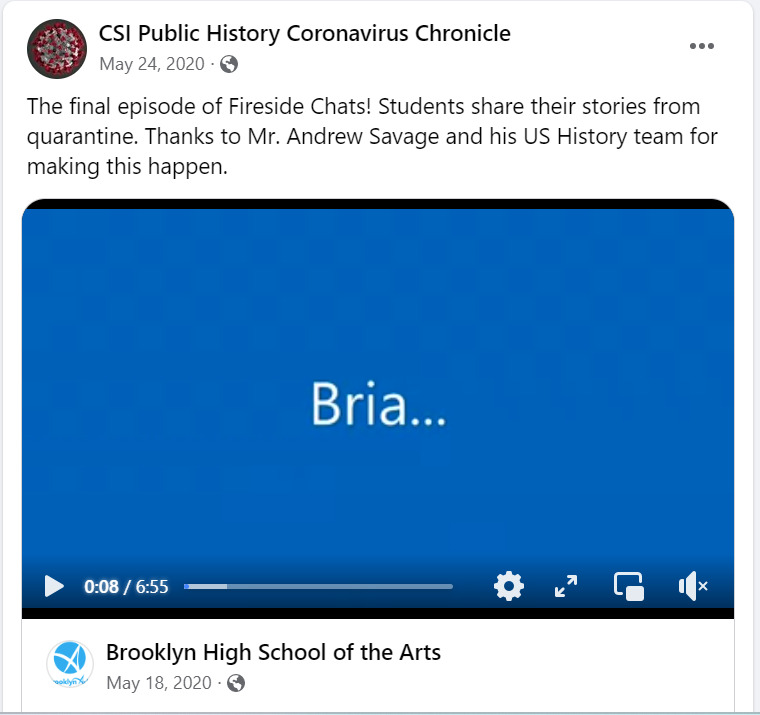 2020-05-24
2020-05-24Fireside Chat Final Episode
The final episode of Fireside Chats! Students share their stories from quarantine. Thanks to Mr. Andrew Savage and his US History team for making this happen. -
 May 24th, 2020
May 24th, 2020Above and Beyond
Staten Islanders went above and beyond in coming together during this pandemic. -
 May 22nd, 2020
May 22nd, 2020Environmental Psych. First Semester!
This was the first semester that PSY 324 Environmental Psychology, an elective, upper level class in the Department of Psychology of the College of Staten Island was taking place at the St. George campus. It was our hope to have a series of field trips bringing our understanding of the dynamic between peoples and places outside of the classroom. We only managed to do one such trip, but nevertheless, the seed was planted. As a class we understood that there was more to psychology than power points and tests. Collaboratively, we started creating a curriculum that tried to use our shared knowledge of the world together with the conceptual complexity of environmental psychology theory. Quickly our task had to move online where we figured out how to move forward in our quest, without leaving behind those of us who are sick, taking care of sick people, working dangerous jobs, or have lost jobs due to the pandemic. -
 May 5th, 2020
May 5th, 2020Covid: Should We Re-open? A poll
Is it too soon to reopen all businesses on Staten Island? I wanted to reopen, but I was nervous. My parents are old and this kind of poll result really frustrated me. -
 April 18, 2020
April 18, 2020Paper Product Shortage
A sign of the times. Here is the paper product aisle in a Stop and Shop in Staten Island. -
 May 2nd, 2020
May 2nd, 2020CVS in Lockdown
The CVS on Armstrong and Arthur Kill Road requires masks and social distancing if you are shopping there. -
 April 20, 2020
April 20, 2020Blood Donation
I donated blood today. They've had a shortage of donors, so I decided to do it. Pretty simple process, and I got to talk to people in real life and they gave me snacks after. It was actually fun. My mom made me the mask. -
 May 2nd, 2020
May 2nd, 2020Wait Here
Wait here. This was the story of Covid Life. We had to wait in specific spots, and not crowd registers until called on. This happened quite often, especially at the pharmacies! -
 May 2nd, 2020
May 2nd, 2020Visiting the St. George Market
People waiting 6 feet apart at St. George greenmarket. A good turnout, but everyone was following the new rules of not touching the food and social distancing. -
 April 19, 2020
April 19, 2020In Memory of Richard Sturges
My dad passed away a week ago today after contracting COVID-19 in a SI nursing home and transferring to SIUH. When we first learned of my dad’s diagnosis in the nursing home, his doctor prescribed him hydroxychloroquin which he had been using with good results on other patients. However upon trying to fill the prescription learned that the NY Health Dept under order by the Governor, had restricted the use of this drug to hospital patients only. You can imagine our dismay to learn this and our family immediately jumped into action contacting every state legislator about this horrific restriction on the elderly and nursing homes. The two who stepped forward to answer our calls and hear our concerns were Borough President Oddo and State Senator Lanza and they made many calls on our behalf. Before long the restriction on nursing homes was lifted, hopefully before too many lives were lost, but the ban remains on any other New Yorker who tests positive and is not hospitalized. My brother and sister, along with their spouses, have now tested positive. Two of them are first responders and had a lot of difficulty getting tested. I have been staying with and caring for my mom through this time and fortunately we have managed to avoid contracting this virus, so far. My dad was buried 2 days after he died. The Navy showed up to play taps and present my mother with a flag “on behalf of the President and a grateful nation”, my dad would have liked that. The picture is attached and I think says a thousand words. Only my siblings and mother were allowed to attend the burial, a funeral is not allowed at this time. We all wore masks and stood apart from each other and afterwards drove home to our separate houses…truly heartbreaking. The fact that my dad was isolated for weeks before his passing is the hardest thing for my mom to bear. They are lifelong Staten Islanders and this is their story…. Thank you. -
 2020-06-05
2020-06-05Staten Island during the Covid-19 Pandemic
Photos depicting Staten Island Protest during Covid-19 -
 May 2nd, 2020
May 2nd, 2020Sign of the times at St. George Greenmarket.
Sign of the times at St. George Greenmarket. -
 April 19, 2020
April 19, 2020CSI Class of 2020
"Finally the thoughts of what my graduation were real. What it would look like, what I would wear, and who i would invite. The joy I felt thinking about the thought of graduation in May; has been replaced with uncertainty. Myself and another class mate walked the campus although it were closed to find lingering students and faculty to complete information for our capstone project, not knowing that what we thought would be a temporary shut down became more permanent. The feeling of despair is an understatement because I returned to school after almost 20 yrs to finish my degree only to be deprived of the feelings you get from accomplishing everything that's required to graduate. All I can do as for now is stay safe so when that alternate graduation date is set, I'm a part of it. You won't take my accomplishment from me Covid!" -
 2020-06-12
2020-06-12Do you Think there Will be a Second Wave of Covid-19 on Staten Island
Do you think there will be a second wave of Covid-19 on Staten Island? -
 May 1st 2020
May 1st 2020The New Normal
The New Normal: People had to stand 6 feet apart when they went shopping. It caused a lot of problems. We also had to wear face masks which caused tension among guests. -
 April 8, 2020
April 8, 2020COVID Litter
What you will find as you take a walk down any block, street, avenue, or boulevard on Staten Island. -
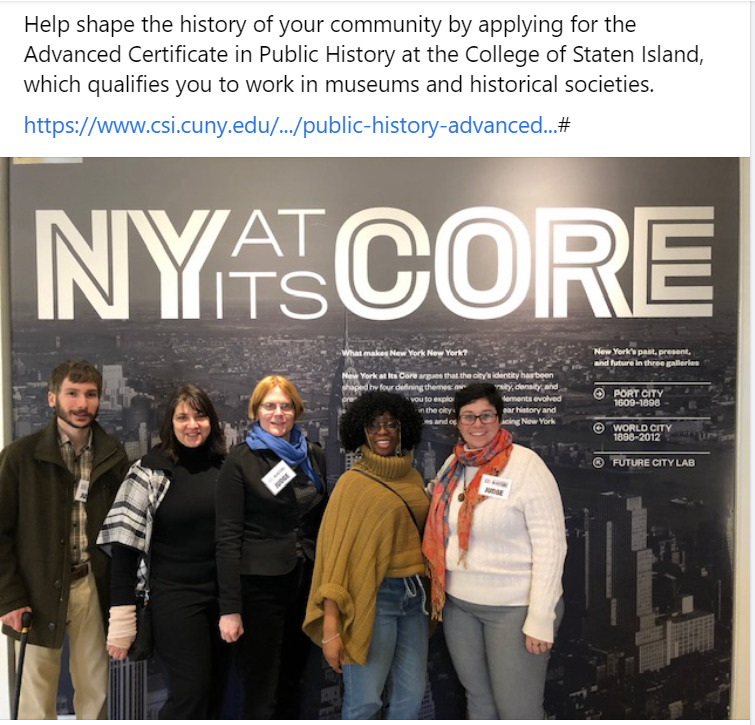 2020-06-17
2020-06-17NY at its Core
Help shape the history of your community by applying for the Advanced Certificate in Public History at the College of Staten Island, which qualifies you to work in museums and historical societies. -
 July 26,2020
July 26,2020NYC tough
#newyorktough #nyc #statenisland #greenmarket https://instagr.am/p/CDIBKKxJ3KK/ -
 April 8, 2020
April 8, 2020The New Normal on Staten Island
Is this the new normal or will Staten Island go back to the way it was before the pandemic? -
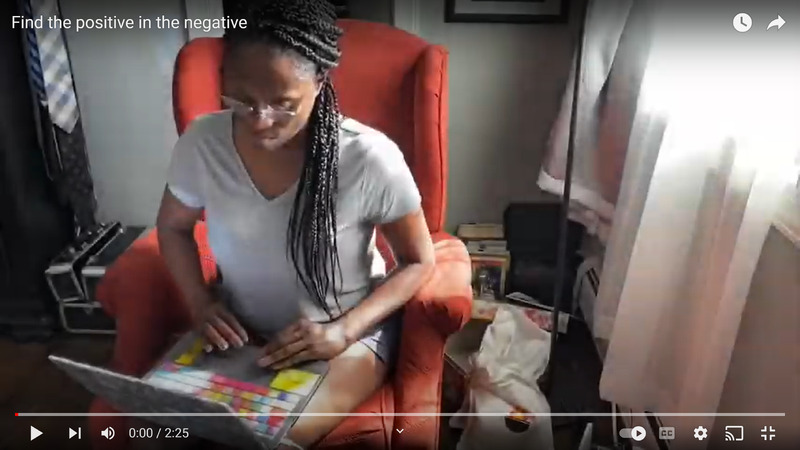 April 8, 2020
April 8, 2020Find the positive in the negative
a look at the everyday life of Gabriella Bartley during the height of the 2020 pandemic -
 2020-05-12
2020-05-12The Fireside Video Chat
Brooklyn high School of the Arts: "Our students are the best storytellers! Tune in this week to see "COVID-19 Fireside Chats". Stories from quarantine from Mr. Savage's US History class! Tonight, First Period! See the full video in the link below. You won't regret it!" -
 April 8, 2020
April 8, 2020Public Health Measures on Staten Island
Social distancing, face masks, empty shelves and restrictions throughout Staten Island. -
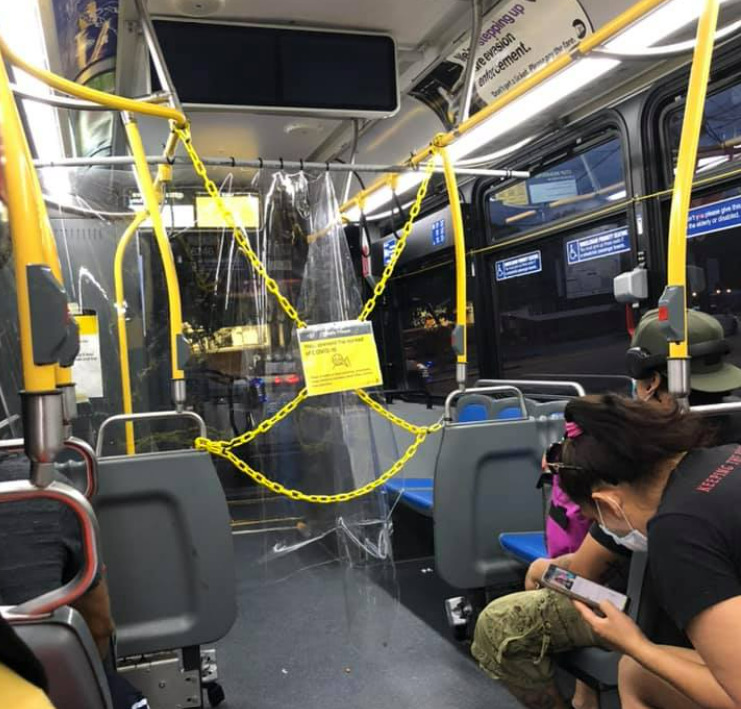 2020-07
2020-07Someday his photo will be historic.
Someday his photo will be historic. For now it’s just everyday reality. Front of bus blocked off for social distancing. -
 2020-05-13
2020-05-13Covid-19 Fireside Chat Series: Episode Two
A virtual chat series that was shot during lockdown. This episode covers students talking about their experiences during lockdown -
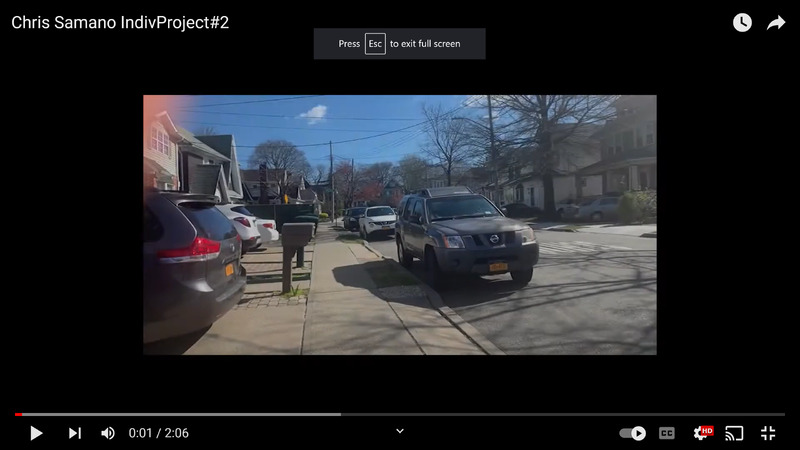 April 7, 2020
April 7, 2020Chris Samano IndivProject#2
a look at the life of chris samano during the early stages of the pandemic -
 July 17, 2020
July 17, 2020#wearamask #cooperstown #nationalbaseballhalloffame
#wearamask #cooperstown #nationalbaseballhalloffame https://instagr.am/p/CCw4BjVJAIQ/ -
 April 8, 2020
April 8, 2020Is this the new normal or will society return to the way it used to be?
CSI Public History Coronavirus Chronicle created a poll asking "Is this the new normal or will society return to the way it used to be?" Four people responded. Three said yes and one said there will be a new normal. -
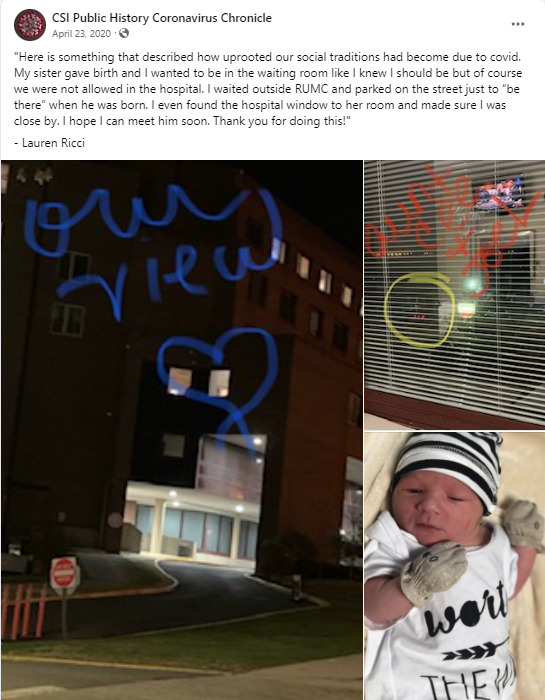 April 23rd, 2020
April 23rd, 2020Hospital During Lockdown
What Hospitals were like doing during lockdown -
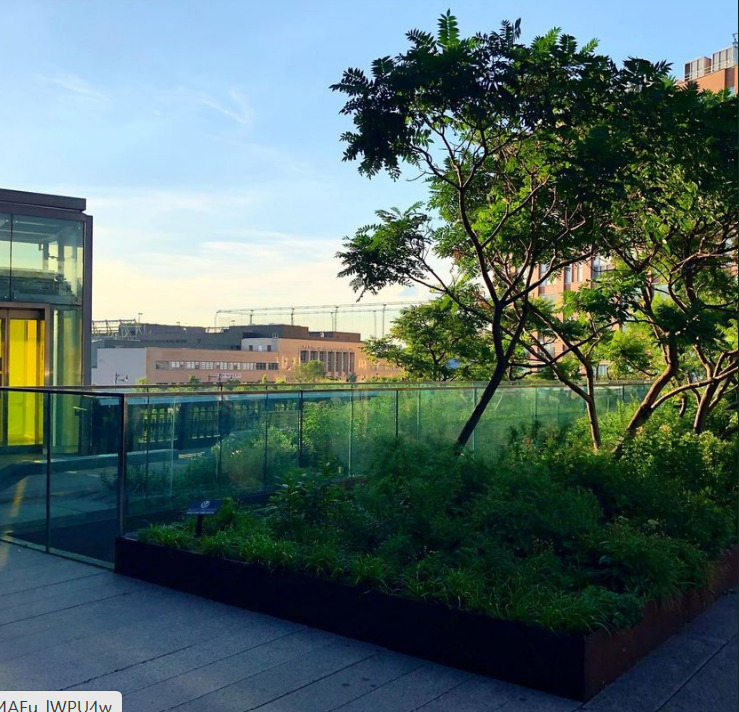 2020-07-21
2020-07-21#twilight on the #highline #nyc #elevator #greenflash
#twilight on the #highline #nyc #elevator #greenflash https://instagr.am/p/CC7EA8ApfcE/ -
 April 5, 2020
April 5, 2020Jessica comoletti project cin 211
a video of an empty/near empty park during the pandemic -
 July 21, 2020
July 21, 2020#highline #nyc #goldenhour #bridgeofsighs #bluesky
#highline #nyc #goldenhour #bridgeofsighs #bluesky https://instagr.am/p/CC7EWhrpc-j/ -
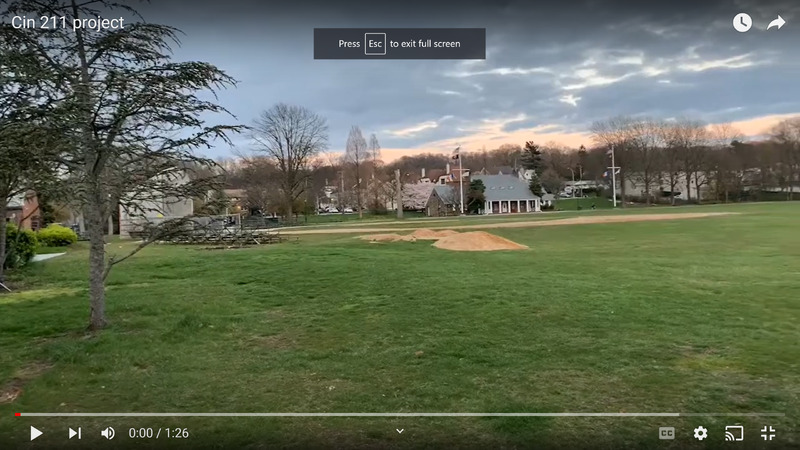 April 5, 2020
April 5, 2020Cin 211 project
a look at the pandemic through the eyes of youtuber @user-hm9gs8by5i -
 April 5, 2020
April 5, 2020Rheana Galloway project2
a look at the early stages of the pandemic through the eyes of Rheana Galloway. -
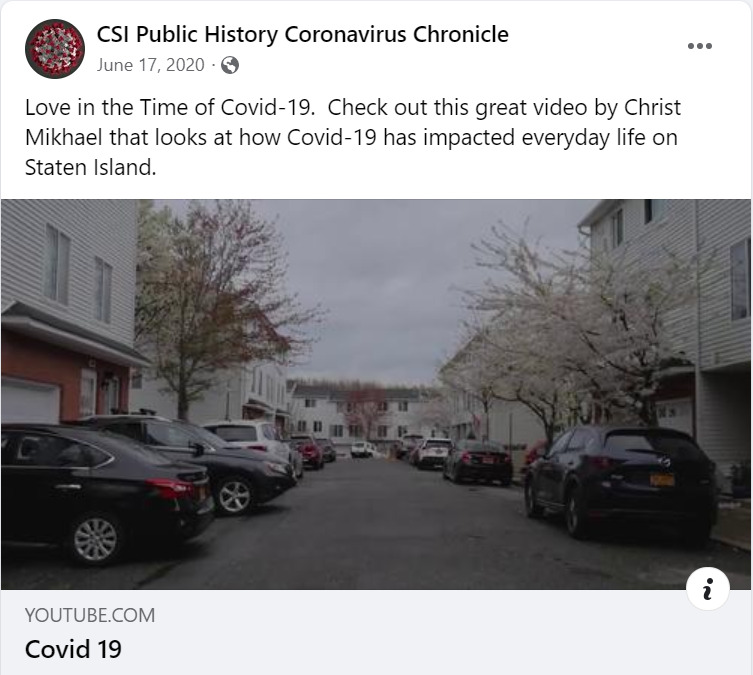 2020-06-17
2020-06-17Covid-19
Love in the Time of Covid-19. Check out this great video by Christ Mikhael that looks at how Covid-19 has impacted everyday life on Staten Island. -
 August 30th, 2020
August 30th, 2020Mayor DeBlasio visits Staten Island
Former Mayor Bill DeBlasio visiting Staten Island Branch of the New York City Police Department -
 April 5, 2020
April 5, 2020LOVE in the pandemic
showing both the sad and happy parts of the pandemic; showing the stereotypical lonely images that oversaturated social media, and then showing a loving family to counteract these images -
 2020-06-17
2020-06-17A Case of a Different Perspective
Youth, Students, Perspective -
 June 19, 2020
June 19, 2020Essential Worker Appreciation
Screenshot of a poster thanking Staten Island essential workers from the CSI Public History Coronavirus Chronicle Facebook page -
 June 20, 2020
June 20, 2020pandemic continues staten island
Screenshot of various photos in Staten Island during Covid19 from the CSI Public History Coronavirus Chronicle Facebook page -
 2020-06-28
2020-06-28New York art
Screenshot of New York art from the CSI Public History Coronavirus Chronicle
